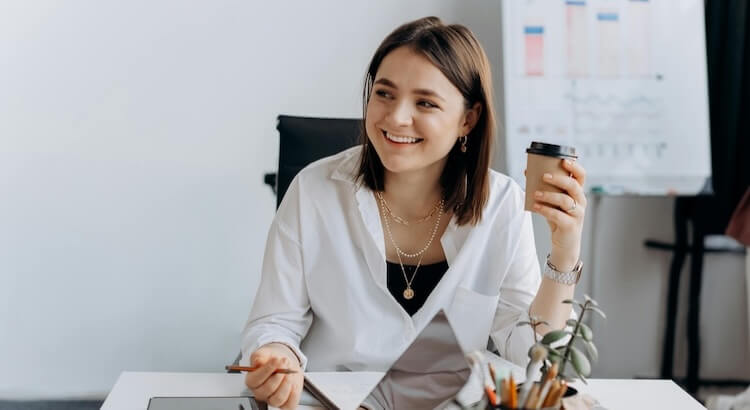Automatic Speech Recognition (ASR): How It Works, Challenges, and Future Potential
Imagine if your computer could write down everything you say during a meeting. This is possible today thanks to automatic speech recognition (ASR). ASR technology lets computers change spoken words into written text, making work and communication easier.
What Is Automatic Speech Recognition?
Automatic speech recognition, often called speech-to-text, is the process where computers listen to speech and turn it into text. ASR joins together computer science, language, and electrical engineering. Using ASR, you can talk to devices or software and get information without typing anything.
Subfields of Speech Recognition
- Speech-to-text: Transcribes spoken words into written words.
- Speaker identification: Recognizes who is speaking.
- Voice recognition: Determines both the speaker and the speech content.
Role of Machine Learning in ASR
Modern ASR uses machine learning (ML), a subfield of artificial intelligence (AI). Both AI and ML help ASR systems learn how to better recognize and process human language through experience. This means ASR systems get smarter the more they are used.
How Natural Language Processing Helps
More advanced ASR includes natural language processing (NLP). NLP helps computers understand the meaning behind words. This improves ASR's accuracy, but the system still needs high-quality input. Factors like background noise, speaker volume, and recording devices all affect results (Wharton, 2022).
Popular Uses of ASR Today
ASR is now common in many industries and devices. Here are some of the most popular ways people use automatic speech recognition:
Closed Captions
ASR often powers closed captioning services on TV, videos, and live events. Captions help people who are hard of hearing. They also improve understanding in noisy or quiet environments.
- Offline captions: Created before the event for movies and programs.
- Live captions: Generated in real time for live TV, video calls, or presentations.
Automatic Transcripts
ASR creates written records for podcasts, lectures, and interviews. Companies now rely on transcription services to get accurate meeting transcripts. This lets employees catch up if they missed a meeting, review quotes, or find information quickly.
Medical Records and Clinical Notes
Doctors use ASR to dictate clinical notes, which are then converted into electronic medical records. During the COVID-19 pandemic, ASR helped with remote patient screening (Wharton, 2022). Medical transcription using ASR aids in research, diagnostics, and patient care.
Contact and Call Centers
Call centers use ASR to:
- Track support conversations automatically
- Speed up issue resolution by quickly analyzing conversations
- Train employees with real conversation data
Research by McKinsey (2019) found that companies using analytics and ASR reduced average call handling time by up to 40%, saving up to $5 million in labor costs and improving both employee and customer satisfaction.
Software and App Development
App developers use ASR to let people interact with apps through voice commands. This reduces the need for large data science teams and makes apps easier to use.
Language Translation
ASR technology improves audio translation services and translation apps, helping break language barriers. Many apps now use ASR for instant translation during conversations, making travel and communication easier.
Smart Devices and the Internet of Things (IoT)
ASR allows users to control smart home devices, like speakers or thermostats, by voice commands. In industries, ASR helps automate manufacturing and streamline operations. As a result, users can say simple commands like “turn down the temperature” and the system responds instantly.
Key Challenges in ASR
ASR systems keep improving, but there are tough challenges to solve:
Bias and Equity
ASR systems sometimes perform poorly for people with different accents or backgrounds. A 2020 study (PNAS) found that African American speakers had a higher word error rate (0.35) compared to Caucasian speakers (0.19). This highlights the need for diverse data during training and fairer software development.
- Expand training datasets with more voices and accents.
- Regularly audit ASR systems for fairness.
Privacy Concerns
People worry about how their speech data is used and stored. They want privacy and protection from misuse. Security measures for ASR include:
- Deleting recordings after use
- Encrypting voice data
- Distributing and anonymizing files to remove personal details (ASR Privacy, 2020)
Technical Barriers
Background noise, multiple speakers, and changing languages still confuse ASR systems. While automated automated transcription improves accuracy, human-based transcription proofreading services remain another strong way to achieve high-quality results.
Future Opportunities for ASR
When ASR developers solve the above challenges, new opportunities appear:
Faster and More Private Systems
- Edge computing: ASR runs on smaller devices closer to the source, not in the cloud. This lowers delays (latency) and increases privacy.
- Personalized models: Devices can adjust ASR to your specific voice or setting.
Ambient and Affective Computing
Technology could become so common that you do not notice it. ASR will allow you to interact with computers all around you, simply by talking. This means your voice could control many items in your home and workplace.
ASR can also analyze speech patterns and emotions. This helps customer support, healthcare, and even safety services better understand what people really need.
Advancing Artificial Intelligence
ASR is a key part of building smarter AI systems, like those that might pass the Turing test. The ability to have normal conversations with computers is getting closer each year.
Conclusion: ASR and the Path Forward
Automatic speech recognition is changing how we interact with technology. It helps us transcribe meetings, create captions, enable translation, and automate many tasks. ASR still faces challenges, but its potential benefits for communication and understanding are great.
If your business needs accurate transcription services, quality closed captions, or help with subtitling and text translation, GoTranscript can help. From fast automated transcription to reliable proofreading, GoTranscript offers affordable solutions. Learn more about pricing for transcription and captioning, or directly order transcription and captioning services online today.



















 Verified Order
Verified Order